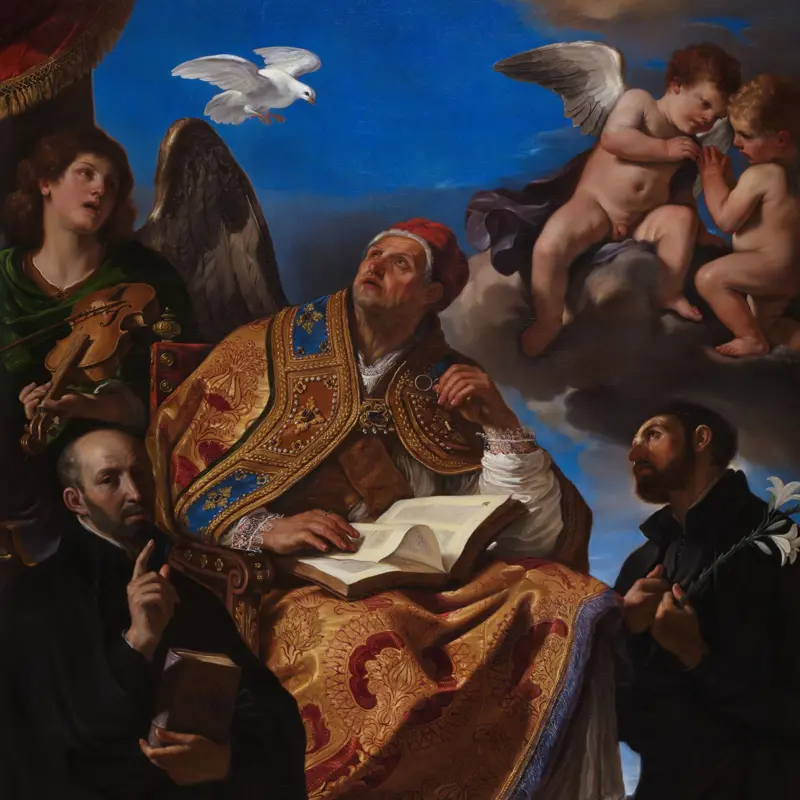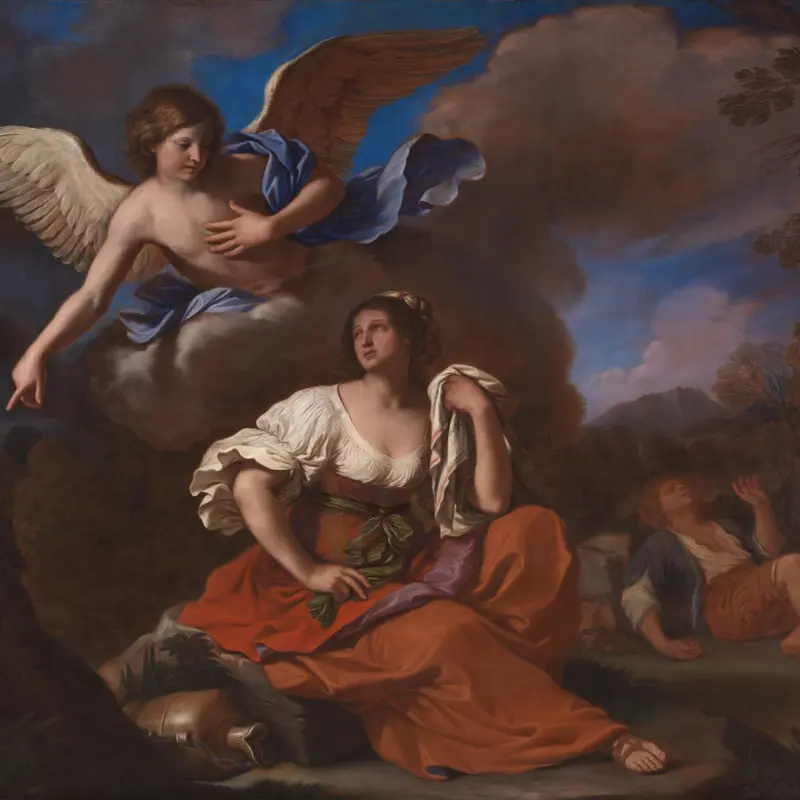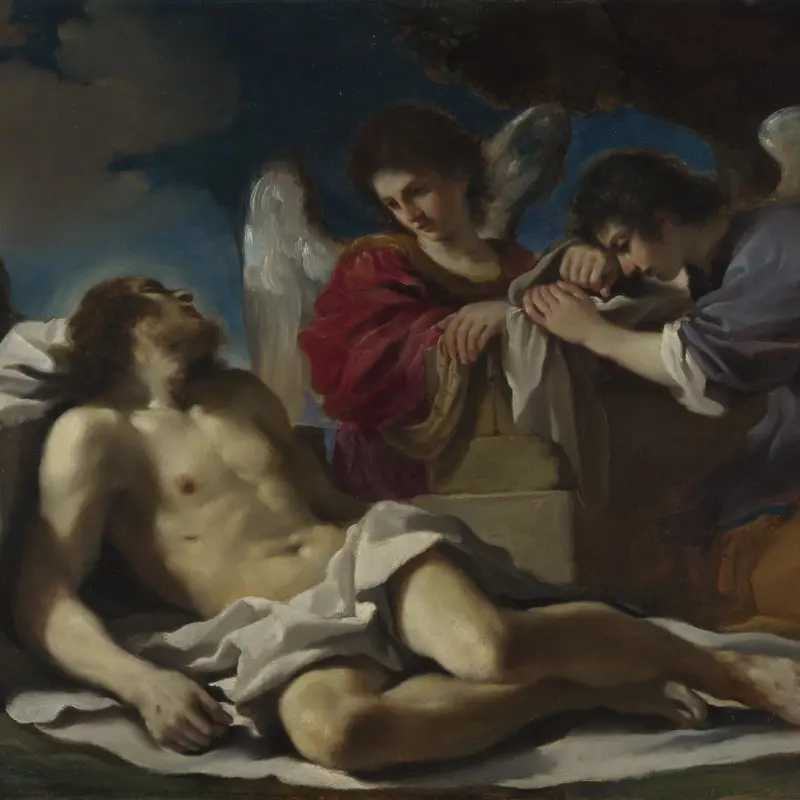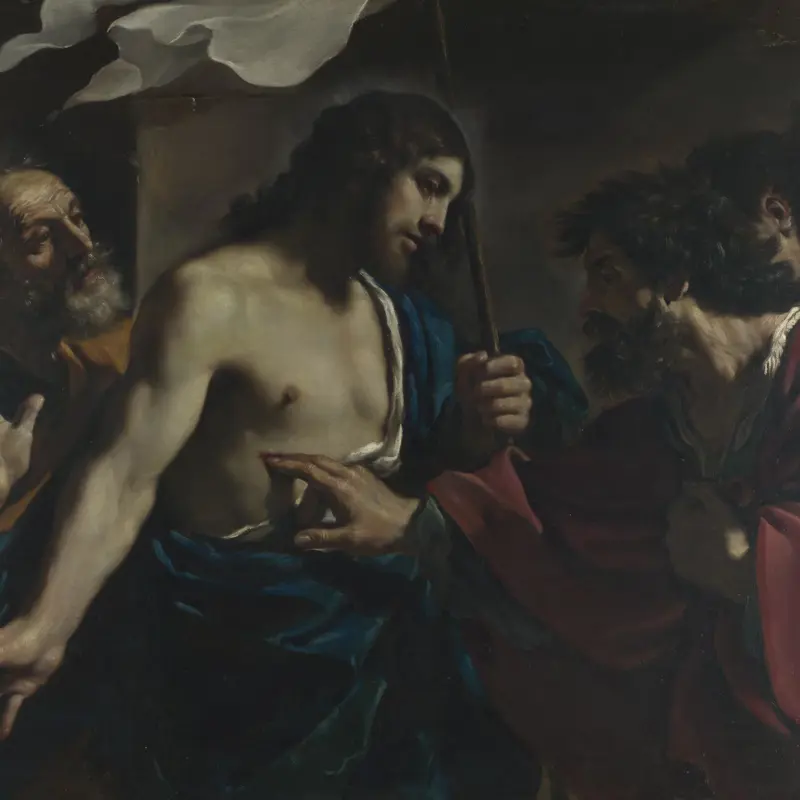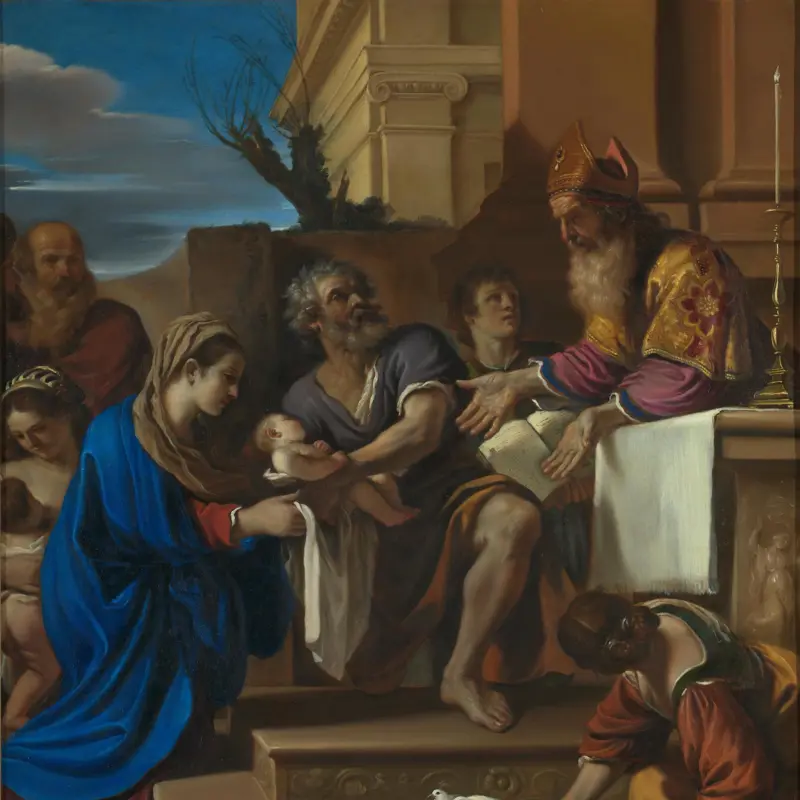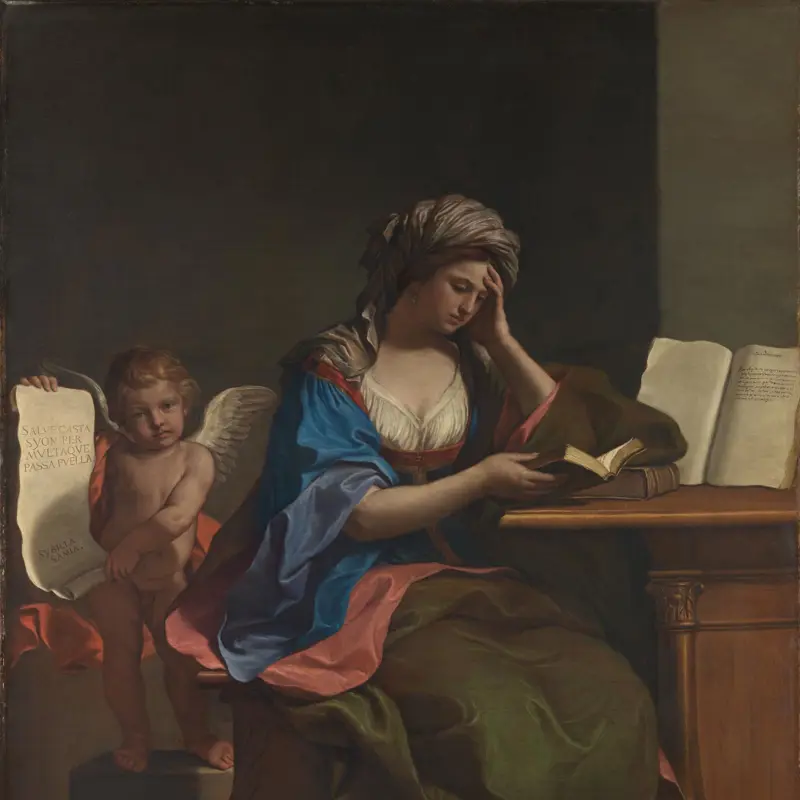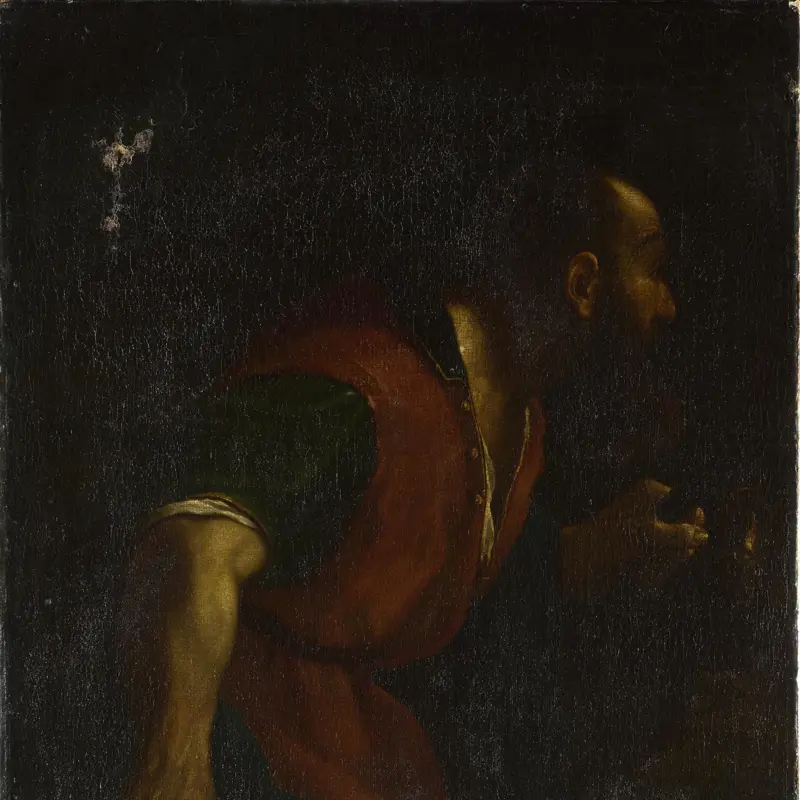Guercino, 'The Cumaean Sibyl with a Putto', 1651
About the work
Overview
The Cumaean Sibyl is one of 12 pagan sibyls, or prophetesses, said to have foretold the coming of Christ. The Cumaean Sibyl, who takes her name from Cumae near Naples, predicted that Christ would be born to a virgin mother in a stable at Bethlehem. The inscription on the stone slab here refers to the wooden cross on which Christ was crucified.
This is one of Guercino’s finest late works, imposing in composition, rich in colour and dignified in pose and gesture. The painting was commissioned in 1651 by Gioseffo Locatelli of Cesena as a companion to Guercino’s King David, now in a private collection. Before it could be sent to Locatelli, it was seen in Guercino’s studio by Prince Mattias de' Medici, who convinced the artist to sell it to him instead. Guercino painted The Samian Sibyl with a Putto, also in the National Gallery’s collection, for the original patron as a replacement.
Key facts
Details
Provenance
Additional information
Text extracted from the National Gallery’s Annual Report, ‘The National Gallery: Review of the Year, April 2012 – March 2013’.
Exhibition history
-
2024Guercino at WaddesdonWaddesdon Manor (Rothschild Foundation)20 March 2024 - 20 October 2024
Bibliography
-
1678C.C. Malvasia, Felsina pittrice: Vite de' pittori bolognesi, Bologna 1678
-
1808J.A. Calvi, Notizie della vita e delle opere del Cavaliere Gian Francesco Barbieri detto il Guercino da Cento, Bologna 1808
-
1953G. Briganti, 'The Mahon Collection of Seicento Paintings', The Connoisseur, CXXXII, 1953, pp. 4-18
-
1956Palazzo delle esposizioni, Il Seicento Europeo: Realismo, classicismo, barocco (exh. cat. Palazzo delle Esposizioni (Rome), December 1956 - January 1957), Rome 1956
-
1957H. Honour, '17th Century Art in Europe', The Connoisseur, CXXXIX, 1957, pp. 34-5
-
1957D. Sutton, 'Seventeenth-Century Art in Rome', The Burlington Magazine, XCIX/649, 1957, pp. 109-15
-
1957Manchester City Art Gallery, Art Treasures Centenary: European Old Masters (exh. cat. Manchester City Art Gallery, 30 October - 31 December 1957), Manchester 1957
-
1962E.K. Waterhouse, Italian Baroque Painting, London 1962
-
1968D. Mahon, Il Guercino: Catalogo critico dei dipinti (exh. cat. Palazzo dell'Archiginnasio, 1 September - 18 November 1968), Bologna 1968
-
1973C. Whitfield, England and the Seicento (exh. cat. Agnew’s (Thos. Agnew & Sons Ltd), 6 November - 7 December 1973), London 1973
-
1986M. Aspinwall et al., The Age of Correggio and the Carracci: Emilian Painting of the Sixteenth and Seventeenth Centuries (exh. cat. National Gallery of Art, Washington, 19 December 1986 - 16 February 1987; Pinacoteca Nazionale, 10 September - 11 November 1986; Metropolitan Museum of Art, 26 March 26 - 24 May 1987), Washington 1986
-
1988L. Salerno, I dipinti del Guercino, Rome 1988
-
1991D.M. Stone, Guercino: Catalogo completo dei dipinti, Florence 1991
-
1991S. Ebert-Schifferer (ed.), Il Guercino (exh. cat. Schirn Kunsthalle, 3 December 1991 - 9 February 1992), Frankfurt 1991
-
1991M. Helston et al., Guercino in Britain: Paintings from British Collections (exh. cat. The National Gallery, 28 June - 31 July 1991), London 1991
-
1991D. Mahon, Giovanni Francesco Barbieri, Il Guercino, 1591-1666 (exh. cat. Museo civico archeologico, 6 July - 10 November 1991; Schirn Kunsthalle, 2 December 1991 - 9 February 1992; National Gallery of Art, Washington, 15 March - 17 May 1992), Bologna 1991
-
1992National Gallery, The National Gallery Report: April 1991 - March 1992, London 1992
-
1997G. Finaldi et al., Discovering the Baroque: The Denis Mahon Collection (exh. cat. The National Gallery, 26 February - 18 May 1997), London 1997
-
2001
C. Baker and T. Henry, The National Gallery: Complete Illustrated Catalogue, London 2001
-
2004D. Mahon et al., Guercino: Poesia e sentimento nella pittura del'600 (exh. cat. Palazzo Reale (Milan), 27 September 2003 - 18 January 2004), Milan 2004
-
2014National Gallery, The National Gallery: Review of the Year, April 2012 - March 2013, London 2014
About this record
If you know more about this work or have spotted an error, please contact us. Please note that exhibition histories are listed from 2009 onwards. Bibliographies may not be complete; more comprehensive information is available in the National Gallery Library.



